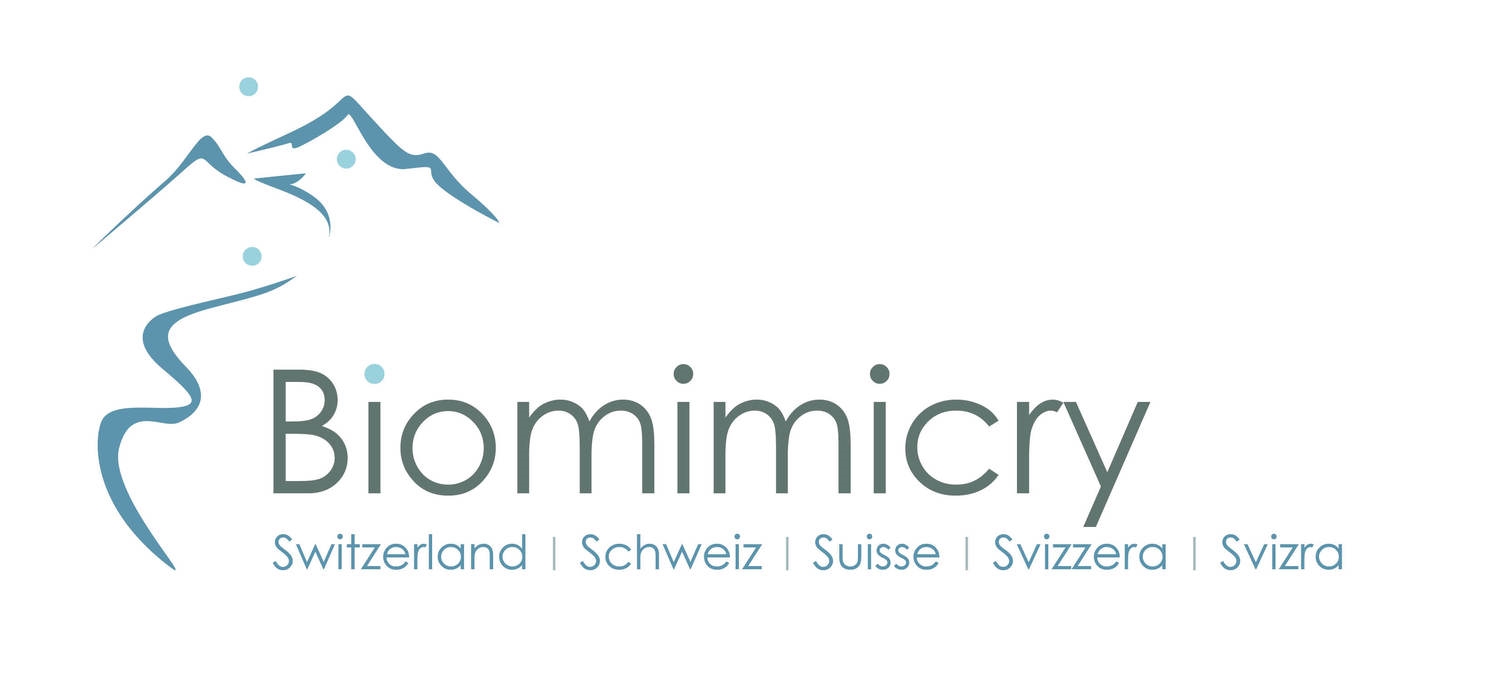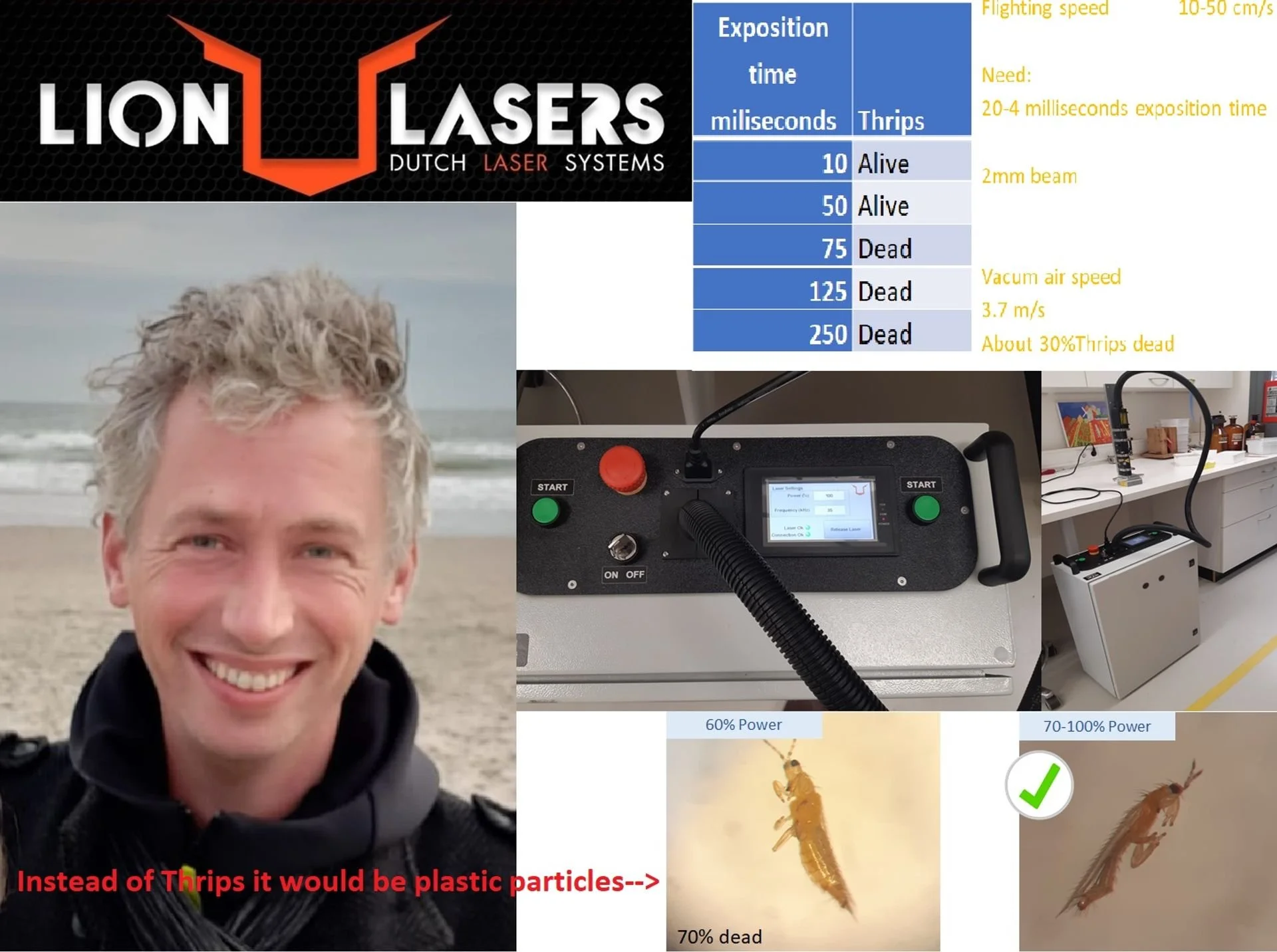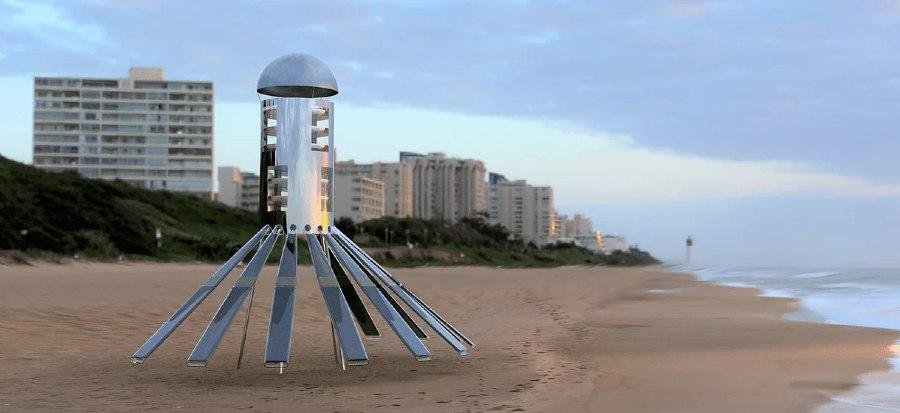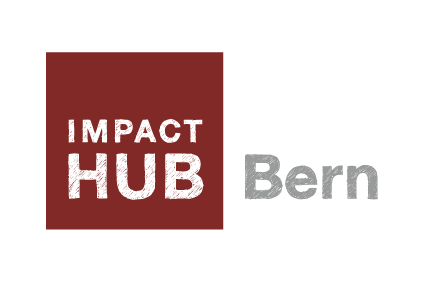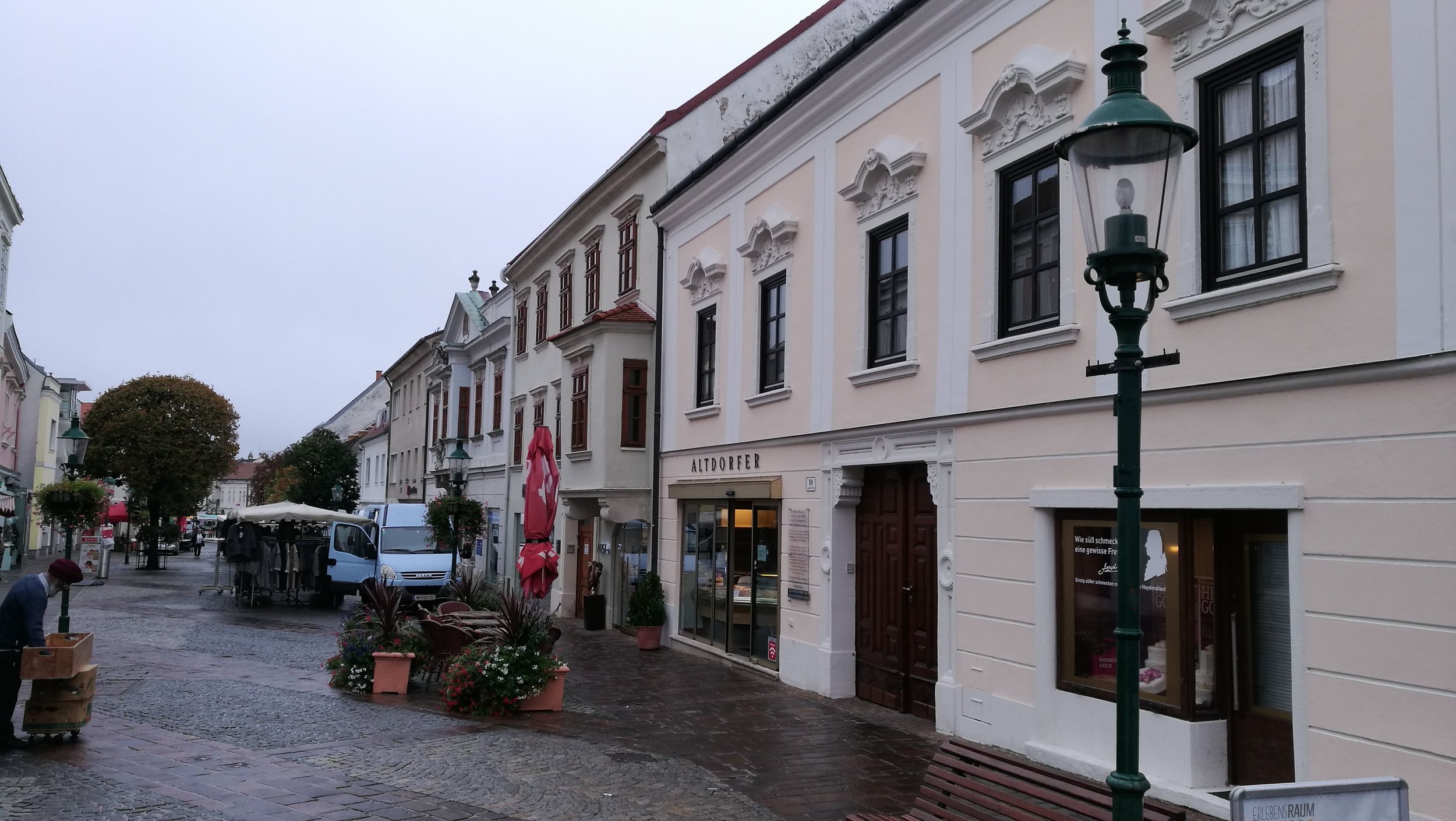Current Event
Webinar Series
Biomimicry is a powerful force for sustainable innovation. Biomimics study nature's most successful ideas over the past 3.5 million years, and adapt them for human use. The webinar series will help guide you through the fundamentals of biomimicry.
Biomimicry Switzerland Past Events
PAST Webinar Series
Biomimicry is a powerful force for sustainable innovation. Biomimics study nature's most successful ideas over the past 3.5 million years, and adapt them for human use. The webinar series will help guide you through the fundamentals of biomimicry.
Capture the genius of nature through sketching
Discover how Chris Montero uses all his senses to capture nature's genius and restitute it in beautiful sketches. And let us learn from it.
Chris will help us learn from his practice to allow us to tap into nature's patterns to (re)connect with ourselves, our communities, and the world around us.
Chris was born and raised in Costa Rica, where he was fortunate in having ample contact with nature in this country of exuberant tropical ecosystems. His enthusiasm for wildlife began at an early age with a large focus on reptiles, but in time my interest expanded to other groups of organisms. He also explored natural history and conservation which eventually led him to do my studies at university in biology and natural sciences.
Nature Sketching Resources: The Wolf Education and Research Center and Chris Montero’s portfolio
Creating Appeal in Hospitality Through Nature Inspired Floral Designs
Guests are to hotels, what bees are to flowers. Creating appeal and allure for guests in hospitality through floral designs.
Hospitality holds a rare opportunity; to celebrate the natural and local beauty that surrounds the property. In this way, the influence is to take care of our planet and empower the community in which it operates. And in so doing creating the Guest Experience.
Growing up, when doing art, Emely van Heesch-Smith was always drawing nature, and very often forests. She always loved the idea of using nature to celebrate nature, and this is what she wanted to do differently in the industry. Emely van Heesch-Smith has been for 26 years in hospitality as a florist & textile supplier, she is deeply driven to consult hotels and lodges in how to operate in a more sustainable way, using less waste, saving budgets, and rehabilitating the environment.
Stories of Food Regeneration in Arid Regions
Sara El-Sayed will educate us about regenerative local food systems, and how they are enabled by biomimicry and indigenous practices.
El-Sayed has a joint position as the Co-Director of the Biomimicry Center and Assistant Research Professor at the Swette Center for Sustainable Food Systems. El-Sayed has a doctorate in food system sustainability, specifically on regenerative food practices in arid regions, and a master's in Biomimicry both from ASU. She also has a Biomimicry Professional Certificate from Biomimicry 3.8. She held a postdoctoral position at the School for Future innovation and Society, in Public Interest Technology. Her research interests include exploring ways to have more regenerative and net-positive local food systems, she is currently involved in the local Arizona food space.
Previously she worked as a researcher in Biomimicry and microbial geographies. She is the co-founder of several enterprises in Egypt. Nawaya is a social enterprise working as a catalyst to transition small-scale farmer communities into more sustainable ones through education and research.
Dayma an LLC responsible for outdoor Environmental Education, teaching young adults about Biomimicry and local Egyptian communities. Clayola is an LLC producing low-tech irrigation systems. She is an avid traveler, nature lover, and enjoys tasting foods, cooking and interacting with people through food experiences. Sara is on the board of Slow Food, an international movement that started in Italy aiming to safeguard local food cultures and traditions and does so by promoting Good, Clean, and Fair food for all.
Professor Sara El-Sayed:
Senior Global Futures Scientist, Julie Ann Wrigley Global Futures Laboratory
Assistant Research Professor, School of Complex Adaptive Systems, College of Global Futures
Co-Director, The Biomimicry Center, Arizona State University
Assistant Research Professor, Swette Center for Sustainable Food Systems, Julie Ann Wrigley Global Futures Laboratory
Biomimicry in the Built Environment
Discover how biomimicry can lead the way in managing rising temperatures in tropical environments... and much more.
Presented by Dr. Anuj Jain.
He is the Founding Member of Biomimicry Singapore Network and the Principal Ecologist & Biomimic at bioSEA Design Consultancy in Singapore.
Armed with a Biomimicry Professional Certification by Biomimicry 3.8, USA, Anuj engages in a number of biomimicry activities from youth to professionals. He has led a number of talks, workshops, and is obsessed with developing ways in which biomimicry can be used to better manage rising temperatures in the built environment in tropical climates. He is also interested in how biomimicry can offer a new lens for nature conservation.
Biomimicry for a Circular Materials Economy
Werewool is a women-led and owned biotech company, following nature's blueprints to engineer biodegradable textile fibers.
Theanne Schiros, PhD
The current ‘take-make-waste” model of the linear economy has catalysed an anthropogenic tipping point, with severe and potentially irreversible consequences for climate stability, biodiversity and health. The textile industry in particular is infamous as a leading driver of this critical threshold. Yet all the aesthetic and performance properties we demand of our clothes, and many more, can be found in nature. Werewool is a women led, women owned early stage start-up following nature’s blueprints for function to produce biodegradable textile fibres with DNA-programmed colour and performance, such as stretch, waterproofing and antimicrobial properties, all provided by protein structure. Werewool is co-founded by Chui Lian Lee, Valentina Gomez, Theanne Schiros, Allie Obermeyer, and Helen Lu, who envision a future of high performance, regenerative textiles for a sustainable circular economy built on the foundations of biofabrication and strategic biomimicry.
Nature’s inspiration for a Hopeful 2023 - A Biomimicry Fireside Chat
An interactive conversation across continents to harness nature's genius for a hopeful start in 2023.
Featuring biomimics
Jess Berliner (South Africa)
Rana Hajirasouli (UAE)
Michaela Emch (Switzerland)
We will share our favorite organisms, processes, and systems in nature and learn from them how to feel and project hope for a new year in an uncertain environment.
Indigeneity and Biomimicry in Animation - A Regenerative Path to cultural preservation and ecological conservation
Yolanda Methvin is an Animist. A visionary social entrepreneur, creator and new paradigm storyteller based in Cape Town, South Africa. An American by birth and African by choice, Yolanda believes in a South Africa which invests in the creativity of its human capital, while enhancing their inextricable connection to the land, languages and deeply held cultural traditions through the lens of indigenous herbal health and wellness.
What you will learn in this webinar:
How endemism and indigeneity are not for plants only
How the creative sector and digital animation play a role in ecological regeneration
How circularity in systems is a reflection of Afrofuturism
Biomimicry and Climate Technology: Using Nature to simply remove CO2 and Air Pollution
We are faced today with unquestionable evidence that our climate is changing, leading to wild fires, floods, excessive temperatures, food shortages and many other disasters. While we are pursuing avenues for renewable energy, transportation and many other industries, all requiring new infrastructure and resources, could this be achieved in our fast-paced and changing environment? Could Biomimicry help us creating circular models to achieve net-zero?
Helene Thibieroz is currently the CEO of RainIons, a unique biomimicry-based technology removing CO2 and air pollution at the source using a novel approach of material science and electrochemistry.
Helene Thibieroz is a CEO and an entrepreneur in residence with a global vision merging technology, business and innovation. With a strong technology and business background, she created the accelerator We Grow Green Tech as a vehicle to apply conscientious technology and nature-based science to scale practical solutions to current environmental challenges. During this time, she acquired solid hands-on expertise in climate change, green tech and biomimicry and performed various roles as mentor/advisor/board director at leading accelerators, academic institutions and green technology early-stage companies; shared her expertise as a distinguished speaker in green technology and climate change at global technology symposiums and business conferences.
What you will learn in this webinar:
How to scale biomimicry technologies and startups in a business environment
Biomimicry cases studies pertinent to entrepreneurship and commercialization
How Biomimicry could be successfully used in the context of Climate Tech
Biomimicry for Visual Communication Design Strategies
Designers promote products, services and craft messages and interactions that are sometimes short lived, yet use a lot of energy or materials to reach this goal. The average rate of return for a direct mail campaign is 0.5 to 2% according to JWM Business Services. Natural systems, on the other hand, thrive because they are operating in a multi-functional, collaborative, and closed-loop system.
What you will Learn in this Webinar:
The Life’s Principles that describe the deep patterns in nature are an effective tool for visual designers to tap into how nature operates without having to have biological knowledge. Michelle Fehler from nahimsa will present her research on how these Life's Principles can inform visual communication design strategies. Nahimsa’s goal is to provide tools for brainstorming and evaluating so that graphic designers can practice life-centered design. The talk is most beneficial to those involved in visual communication design, but no in-depth/prior knowledge is needed to get inspired. Topics include:
Biomimicry
Graphic design, including UX, web, print, etc.
Systems thinking
Life-centered design
Michelle’s love for nature sprouted during her childhood in Switzerland where she grew up surrounded by lush, green vegetation and farm animals. In her mid twenties, she moved to Phoenix for a 6 month adventure but after 25 years there, she calls Phoenix her home. Michelle is a trained graphic designer with a Master's in Nature-based Graphic Design, a Master's in Biomimicry and is a certified Biomimicry Professional (Biomimicry 3.8). She is currently a Clinical Assistant Professor at The Design School at Arizona State University where she also teaches the capstone class as part of the world's first Master's Biomimicry Program at Arizona State University.
Biomimicry and social innovation: Leadership tips from the African Savanna
With more than 10 years of experience in multinational companies as a manager, certified eco-somatic, executive coach and passionate Biomimic, Silvia will guide us through the concept and some applications of biomimicry for social innovation. She will share an accessible, exciting blend of information on mentors from the savanna and lessons that we can learn from them.
Silvia Mirandola, is a Biologist who attained a Ph.D. in Biomedical Sciences from the University of Padua. She has devoted 12 years of her life to Medical Research, collaborating with different Universities, and is the author of several scientific publications on viral Hepatitis. After a career in the Medical Affairs of Pharma companies, she expanded her interest in Transformative Leadership and Team-coaching Programs, designing and creating science-driven training, facilitation, and coaching services. She is an eco-somatic and executive Coach (ACC) certified by the ICF (International Coaching Federation), creator of WeBiomimic® for Team Effectiveness and author of, “Leadership Safari. Meet the experts in the African savanna”.
She is co-founder of Biomimicry for Business and believes nature is an endless source of learning, creativity and innovative solutions.
Lasers light the way: Chasing nature's nanostructures
The flamboyant colours of a peacock are fake. Have you ever seen a shark covered with algae or barnacles? How cool would it be if your car’s window has a penguin’s de-icing properties?
In this webinar, Ed will take us down the rabbit hole to nature’s tiniest bumps and ridges on a nanometer scale. At a billionth of a meter, is the scale where visible light behaves strangely and bacteria are pierced into shish kebabs. This is where lasers thrive with millions of individual light pulses lasting just a billionth of a second each. Welcome to Ed’s world, where invisible nanostructures have visible effects.
Edwin Kroon (Ed) - Little Ed was told animals don’t understand what he’s saying. Yet they seemed to listen to commands such as ‘Sit’ or ‘Come here’. Little Ed found that contradictory.
Less-Little Ed studied Animal Science at the Wageningen University and was told that hair and feathers are made from the same material but react differently to water. Less-Little Ed wanted to copy-paste the feathers’ water-repellent structure on his shower drain since it was always clogged with water-attracting long hair.
After 10 years of searching, Not-Little-Anymore Ed found the tool to replicate these surface structures: Lasers. For the past 5 years, that has been his tool to chase Nature’s nanostructures. Zoom Recording
Mycelium: Stepping into Successful Partnerships Inspired by Nature
With more than 10 years of experience in facilitating multi-stakeholder partnerships and as a biomimicry practitioner, Marina will guide us through the fundamentals of innovation through biomimicry and present how she used them to develop a tool to help facilitate partnerships and to create safe spaces for collaboration. She believes in nature as a mentor and playfulness as a catalyst for creativity.
Inspired by the mutualistic association between fungi and trees, Mycelium is a fun and inspirational game to allow creative conversations amongst stakeholders and to help them reflect on their own partnership journey. Playing Mycelium allows stakeholders to agree on principles, expected behaviours and actions for the partnership in a trusting atmosphere, quickly developing a common language for mutual understanding.
Marina Ruta is passionate about innovation and initiatives fostering environmental sustainability, Marina is currently Lead of the BiodiverCities by 2030 Initiative at the World Economic Forum.
Marina holds a PhD from the Doctoral School of Environmental Engineering at the Ecole Polytechnique Fédérale de Lausanne (EPFL) and an MBA with a specialization in International Organizations from the University of Geneva. She is a certified PMI project manager, biomimicry practitioner and yoga teacher. With both Italian and Swiss citizenship, she currently resides in Geneva. In her spare time, she can be found in nature, hiking and freediving. She constantly explores initiatives shaping the future of sustainable development, nature and human consciousness. Zoom Recording
Biomimicry and Aquaculture
SeaStem is an algae industry startup, developing equipment for the algae industry to sustainably improve the seaweed production logistics. Mathias Baumann and Eléonore Wild who founded SeaStem discussed the development of unique innovative solution inspired by nature. The DRYLGAE is bio-inspired seaweed dryer: Emulating features such as the camel’s nostrils, the Hercules beetle’s elytra, or the moth’s eyes, DRYLGAE is a bio-inspired solar seaweed dryer. SeaStem solution relies solely on solar energy and passive structures to dry algae in a closed environment while preserving their bioactive compounds. The startup goal is to provide emerging seaweed production companies with a resilient, affordable, and energy-efficient alternative to dry the algae on the harvesting spot. Removing 80% of the algae mass by implementing seaweed drying directly at the harvest site is crucial for cost and energy savings. As a direct consequence, SeaStem solution will lower the cost of algae production. Zoom Recording
Biomimicry and Urban Design: Shifting to Regenerative Practices
Attracted by unexplored paths and inspired by the ineffable character of some natural processes, the discovery of biomimicry enabled Fabian Deply to align his academic career with his interests. Following a Bachelor degree in Biochemistry at the University of Geneva (Switzerland), Fabian undertook a Master degree in Bio-inspired Innovation at the University of Utrecht (The Netherlands) during which he moved on to regenerative urban planning by pursuing an internship at Victoria University of Wellington (New Zealand). Zoom Recording
Curating Knowledge Ecosystems Using Biomimicry Thinking Process
Hugo Araujo is a Biomimicry Professional (2011-2013) and co-founder of 7VORTEX SRL in Belgium. He is one of the first 30 biomimicry professionals worldwide and is certified by the Biomimicry Institute. His company is the digital design firm behind virtualgaia.com and 7vortex.com, a collaborative platform for a new kind of problem solver.
In this webinar, Hugo will walk us through the process of how a regenerative technology was designed from nature and using the Biomimicry Thinking Process. The take away for you will be to gain the basic skills to create your own Knowledge Ecosystem while Hugo also shares some insights about ecological interactions. Zoom Recording
The Nature of Lightweight: Elegance is taking the minimum of material to fulfill the function
Deriving inspiration from natural lightweight structures like trees and bones, Patrick Baumann, a Biomimicry practitioner and CEO of Baumann Maschinenbau, and ETH alumnus will share his expertise in lightweight design in our next webinar.
Patrick has 20 years of experience in solving the problem of creating lightweight structures. Join us in this free webinar to discover this mesmerizing field and learn how to get started on your own lightweight designs. Zoom Recording
My Biomimicry Journey
From discovering to writing my book about bio-inspired human communication. Presented by Michaela Emch Biomimicry Practitioner, Communication Specialist & Corporate Culture Mediator
Michaela Emch will transmit her experience with biomimicry since she discovered this discipline, all the way to the achievement of her title of Biomimicry practitioner and the writing of her book “From Nature’s Mouth – The Handbook for Bioinfused Communication”.
Are you a communication specialist looking for a different approach and for more natural interactions? Are you fascinated by biomimicry and investigating its potential application in human communication? Or are you simply interested in the innovation created when two disciplines are brought together for the first time?
Learn Biomimicry / Educational Platform
Claire Janisch & Jess Berliner - Co-founders of Learn Biomimicry South Africa
In the world of ongoing skills development, what does vision-based learning look like, versus learning only through a prescribed linear set of steps? And as for designing a living, thriving world – what does it mean to live and thrive; to be regenerative, resilient, agile and to integrate development with growth?
The Essential of Biomimicry
Learn how to apply biomimicry thinking to solve human challenges. Participants will jump right into practicing the steps of integrating biology into design using real human challenges. Through interactive dialogue and hands-on learning activities, the foundation of biomimicry will become familiar and tangible tools to employ in one’s work. This webinar provides an introduction to biomimicry, a new discipline that emulates nature’s best models in order to solve human design challenges.
Design for Life How to Apply Life's Principles to your Product, Process or Solutions
Animals, plants, and microbes are the consummate engineers. They have found what works, what is appropriate, and most importantly, what lasts here on Earth. Life has evolved a set of strategies that have sustained over 3.8 billion years. Life’s Principles represent these overarching patterns found amongst the species surviving and thriving on Earth. In this webinar, the participant will learn about the biomimicry life’s principles and how to incorporate in your design.
What Nature Teaches Us About Resilient Society
Effort to build community resilience often focus on growing the capacity to “bounce back” from disruptions, like those caused by climate change. Resilience is the ability of a system (like a community) to absorb disturbance and still retain basic function and structure. Learning from natural systems on how to building regenerative and resilient communities.
Biomimicry - Future Innovation is Nature-Inspired (21 September, 2017 BERN)
Nature stores millions of kWh of energy every day, cleans millions of cubic meters of water, produces millions of cubic meters of oxygen, absorbs millions of tons of CO2, produces millions of tons of biomass, ... and still looks good. Our living environment does all this in normal ambient temperature, without any imported energy, with only about 5 natural elements, without having to haul resources, without any technology and often under the most difficult and appalling conditions. Our biosphere contains millions of years of experience in problem-solving - why do we not let it inspire ourselves more often to solve our daily, entrepreneurial and social problems?
Biomimicry, defined as 'nature-inspired innovation', does exactly that. Developed about 20 years ago by J. Benyus in the USA (B3.8 and Biomimicry Institute), the Biomimicry method enjoys growing attention around the world. The idea is not to recreate nature, but to learn from her and to apply strategies from nature to create human solutions. Biomimicry is focused on sustainability, performance and effectiveness, but above all on the rethinking of why and how we do things. Biomimicry is a domain of innovation, an application method, as well as a philosophy for life and work. Through hints from the multitude of organisms, she seeks to shape a sustainable and life-friendly human existence on planet Earth.
A well-known example is the lotus, whose property of repelling water and dirt particles is already used for self-cleaning surfaces. Another is the self-healing horn of the rhinoceros, which is increasingly inspiring self-repairing materials. Or the termite hill, which has inspired buildings that are able to cope without any technical cooling even in the hottest regions. These are just three of thousands of examples of how innovators are employing references from the living world to rethink our materials, processes, products, and systems. Living organisms can inspire entrepreneurs and creators to create more efficient, more sustainable, more cost-effective technologies and products. The possibilities are endless when we consult nature. Let Biomimicry Switzerland introduce you to the philosophy and methodology of Biomimicry for an evening and take a look at their most convincing application examples.
The European Biomimicry Alliance (September 14-17, 2017 Eisenstadt, Austria)
The European Biomimicry Alliance of which Biomimicy Switzerland is a founding member, is meeting on a regular basis and is fostering the collaboration of Biomimicry projects and fostering and nurturing the Biomimicry network all over Europe.
Regina Rowland of Biomimicry Austria organised the meeting at the Applied Science University FH-Burgenland, Austria. There were about 15 attendants from the following countries:
Austria
Germany
Netherlands
France
Italy
Slovakia
Spain
Switzerland
Bioversum network is now part of EBA. Bioversum network is a transnational network (mainly Italy, Austria, Slovakia) that focuses on nature based design and sustainable solutions.
Upcoming Projects:
A four days workshop (June or September 2018) in Bregenzerwald.
Mapping project of biomimicry practitioners, universities research and entrepreneurs in Europe.
'Online Biomimicry Coach Service' To provide assistance and support to SME.
Alpine Ecosystems in the Tectonic Arena Sardona (September 9, 2017)
Twenty-four students with different design disciplines/background and three professors (Heidi Fischer, Michelle Fehler, Darren Petrucci) from the Arizona State University visited Switzerland for 7 days. Biomimicry Switzerland provided a guided tour in the alps to show the unique habitat and flora and fauna in the mountainous region of Laax, GR.
Ruedi Zuber a local naturalist and geologist guided us through the Tectonic Arena Sardona and gave insights into the local organisms and their context they need to adapt to.
The UNESCO world natural heritage Tectonic Arena Sardona is considered from the perspective of the mountain building worldwide unique. It includes different habitats of plants and animals with adjustments to the extreme environmental conditions.
Topics of the excursion
Adaptation of plants to the extreme living conditions (survival strategies, pioneer vegetation, successions, different substrates, etc.)
Structural construction of the plants, as an adaptation to the living conditions
Geology (tectonics, rocks, morphology)
Climatic characteristics
Program
08:08 Laax Bergbahnen departure shuttle bus to Nagens
08:47 arrival Nagens, greeting, introduction, objectives, tasks
climb Nagens-Grauberg
Karst phenomena, vegetation on pastures
descent Grauberg-Plaun Segnas Sut
Geology (UNESCO World heritage Tectonic Arena Sardona); climate
Adaptation of vegetation to alpine environment
Alpine alluvial plain
climb Plaun Segnas Sut-Muletg da Sterls
Pioneer vegetation, plant succession
12:00 lunch (catering from the backpack)
descent / climb Muletg da Sterls-La Siala
vegetation on ruins, advanced stages of succession
glacier forefield, alluvial plain
descent la Siala – Tschenghel dil Gori
canyon formation, fossils, Flims landslide
descent Tschenghel dil-Gori Segneshütte
vegetation in different mountain meadows
visitors pavilion of the Tectonic Arena Sardona
coffee at the Segneshütte
15:45 descent / climb Segneshütte Alp Nagens
dwarf shrub vegetation
pioneer forest at the timberline
17:00 departure shuttle bus to Laax Bergbahnen
17:28 arrival Laax Bergbahnen, leave-taking
The European Biomimicry Alliance (March 2-4, 2017 Cogoleto, genova)
The European Biomimicry Alliance of which Biomimicy Switzerland is a founding member, is meeting on a regular basis and is fostering the collaboration of Biomimicry projects and fostering and nurturing the Biomimicry network all over Europe.
EPFL Open Days: Workshops and a Lecture (5-6 November 2016, Lausanne)
EPFL Open Days is an event over which EPFL laboratories open their doors to show their work and discuss science. For 2016. edition of the EPFL Open Days Biomimicry Switzerland joined EPFL Bioinspired Projects Platform to co-organize a series of lectures and workshop on biomimicry.
EPFL Open Days - Biomimicry Workshop
Global Biomimicry and Bioinspired Innovation Conference (11-13 November 2016, Utrecht, NL)
Biomimicry and Bioinspired Innovation - 2016
Great talks with highlights of Dayna Baumeister, Michael Pawlyn and Jacques Chirazi to name a few. It was not only a great conference but also a great moment for BSwiss members to reunite (like this fish from Amsterdam having a lunch together ;))!
TEDx UTTroyes (Nov 2016 Troyes)
How can exploring, observing and imitating other living creatures and entities can inspire us ? What can biomimicry teach us? Presentation by Darja Dubravcic
The future is maybe not a place crowded with insensitive robots and machines... Nature and a bit of poetry can help us shaping a future with sustainable solutions. How can exploring, observing and imitating other living creatures and entities can inspire us ? What can biomimicry teach us ?
Economy, People & Planet (Oct 2016, Copenhagen)
Camille Fong from Biomimicry Switzerland had the opportunity to give a talk on ''Biomimicry, an opportunity to evolve the economy'' at the EPP 2016 conference organized by Omstilling Nu in Copenhagen. The Conference showed that our ongoing evolutionary transition is important and possible in all sectors and levels of the economy, starting with small actions. To read more about the event, click here.
EPP16 Conference 2016. Presensation by Camille Fong
Lift Geneva Conference (Feb 2016, Geneva)
Workshop: Deep Patterns in Nature’s Technologies
Milano Design Week (Apr 2016, Milano)
Biomimicry Specialist Monica Cohen has desiged a space to re-think design and to share all the news about the biomimicry design community, platform for innovation, a place to join and connect with business partners at the Milano Design week. Patrick Baumann presented in this series his practical approach to solve lightweight design challenges: “The nature of lightweight design”
Thought For Food Summit - Biomimicry Workshop (Apr 2016 Zurich)
BiomimExpo Expo (Jul 2016, Paris)
Nature Inspired Architecture Workshop (Dec 2015, Liechtenstein)
The European Biomimicry Alliance (Nov 2015 Mallorca)
The European Biomimicry Alliance of which Biomimicy Switzerland is a founding member, is meeting on a regular basis and is fostering the collaboration of Biomimicry projects and fostering and nurturing the Biomimicry network all over Europe.
Biomimicry Applied to Economics (Nov 2015, Basel)
Workshop for Gymnasium Münchenstein
South-by-Southwest (SXSW) Eco Conference, Biomimicry Track (Oct 2015 Austin, TX)
"Bottom-up Economy" Presentation
Workshop: Business as Nature
Community Credit as a Long-term Self-funding Strategy for the Biomimicry Movement (Jul 2015)
Introduction to community credit and demonstration of the Biomimicry Exchange Network (BXN), Presentation by Jamie Brown-Hansen.
Webinar of the Bio-credits Working Group of the Biomimicry Global Network (BGN)
Presentation by Jamie Brown-Hansen
Green Phoenix Congress (Oct 2014, Schweibenalp)
Presentation on "Biomimicry and Financial Permaculture"
What is a Financial System Conducive to Life? Biomimicry Switzerland Community Event
(Dec 2013, Basel)
Presentation by Jacques Chirazi
TEDxAmericasFinestCity - Learning from Nature's Genius
“For most of history, man has had to fight nature to survive; in this century he is beginning to realize that, in order to survive, he must protect it.”
